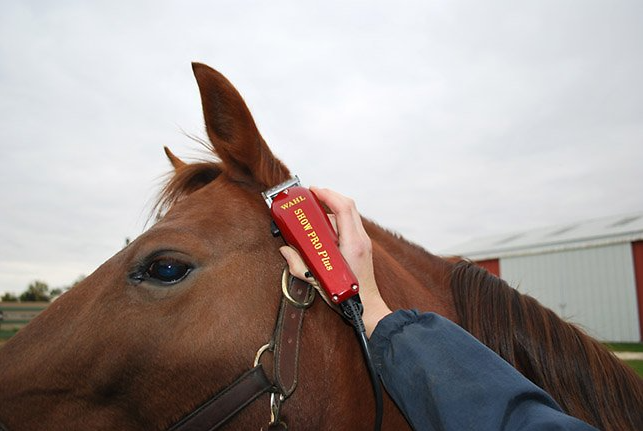Beginner’s Guide to Equine Metabolic Syndrome (EMS)
As the years go by, a term that seems to pop up more and more often among horse owners is Equine Metabolic Syndrome (EMS).
Had you asked me 5 years ago what Equine Metabolic Syndrome was, I would have answered that I hadn’t the slightest clue what you were talking about.

But, as we continue to learn about our equine companions, EMS seems to be becoming a more familiar topic.
With so many people still unsure of what exactly Equine Metabolic Syndrome is, I decided to do an overview of it to bring everyone up to speed.
What is Equine Metabolic Syndrome (EMS)?
Also known as Insulin Dysregulation Syndrome, EMS occurs when a horse is given access to too many calories, especially from simple carbohydrates, and simultaneously does not receive an adequate amount of exercise.
In most cases, it is fairly easy to prevent if owners properly educate themselves.
Studies have shown that EMS appears to rely heavily on the genetics of each individual horse.
Because of this, one horse may get EMS fairly easily while another may not.
While Equine Metabolic Syndrome can affect thinner horses, it typically occurs in those who are overweight, between 5 and 16 years of age, and does not seem to have a predisposition to either sex.
EMS is more commonly found in ponies, gaited breeds (Saddlebreds, Paso Finos, etc.), Morgans, Mustangs, and Quarter Horses.
Thoroughbreds and Standardbreds, however, rarely develop EMS.
Owners of high risk breeds should take proper steps to help prevent their horses from developing the syndrome.
Signs of EMS
1. Obesity
Obesity is extremely unhealthy to a horse for many reasons, with the risk of EMS being just one.
Some horses may also develop abnormal fat deposits.
These can occur as a crested neck as well as fat pads behind the shoulder, at the base of the tail, around the horse’s rump, and in the sheath/udder region.
2. Laminitis
Laminitis is the breakdown of the laminar tissue in the feet which holds the hoof wall to the bone in the foot.
Evidence of laminitis includes rings in the feet, rotation on X-rays, or lameness.
3. Insulin Resistance
Insulin is a hormone produced by the pancreas in response to meals, it assists glucose into cells for use or for storage.
When the body fails to respond properly to insulin, it is called insulin resistance (IR).
Luckily, there are simple blood tests available to measure this response in horses.
Treatment for EMS
Diet and exercise are the key to encouraging weight loss in the majority of horses with Equine Metabolic Syndrome.
Diet modifications should be discussed with your veterinarian and will depend on the individual needs of the horse.
Overall though, non-structural carbohydrates (NSCs) will need to be restricted to levels of less than 10%.
In most cases, this will mean removing grain, restricting pasture, and testing hay.
Exercise regimens should also be discussed with your veterinarian and will depend on the capability of the horse and whether or not the horse is already suffering from laminitis or not.
If a horse’s weight does not respond well to diet and exercise, a high dose of the drug Thyro-L (levothyroxine sodium) can be used to jumpstart the horse’s weight loss.
Once the desired weight loss has been achieved, the horse can then be weaned from the medication.
Prevention of Equine Metabolic Syndrome
While EMS cannot be cured, it can be prevented.
Owner’s of high-risk breeds should educate themselves and be prepared to closely observe their horses for EMS.
Rather than waiting for the syndrome to show itself, people can be focusing on maintaining a normal, healthy weight in their companions through the appropriate diet and exercise.
EMS and Cushings Disease
It is accepted among many professionals that horses with a history of EMS are at higher risk for Cushings Disease, especially as they age.
With Cushings Disease having an FDA-approved treatment capable of slowing the progression of the disease, it is important to test horses with EMS for Cushings as well.
The earlier Cushings is diagnosed, the earlier treatment can begin to slow it down!
For more information on Equine Metabolic Syndrome check out the Merck Veterinary Manual.

Lauren is an internationally published author, trainer, and has helped hundreds of horse-rider combinations create lasting bonds and the success they desire. Check out Lauren’s incredible story: From horse-crazy girl to international equine educator. Or if you want to send Lauren a quick message, check out her contact page here.





